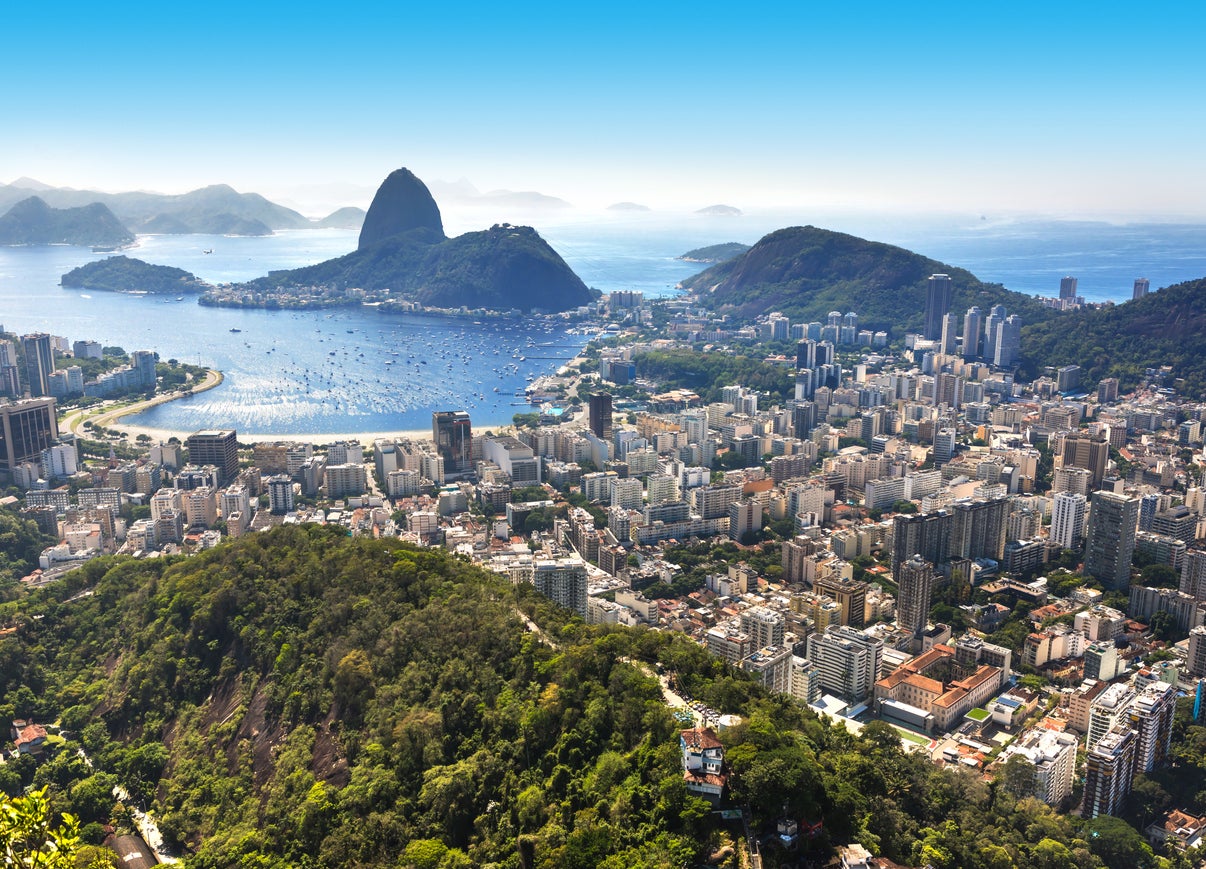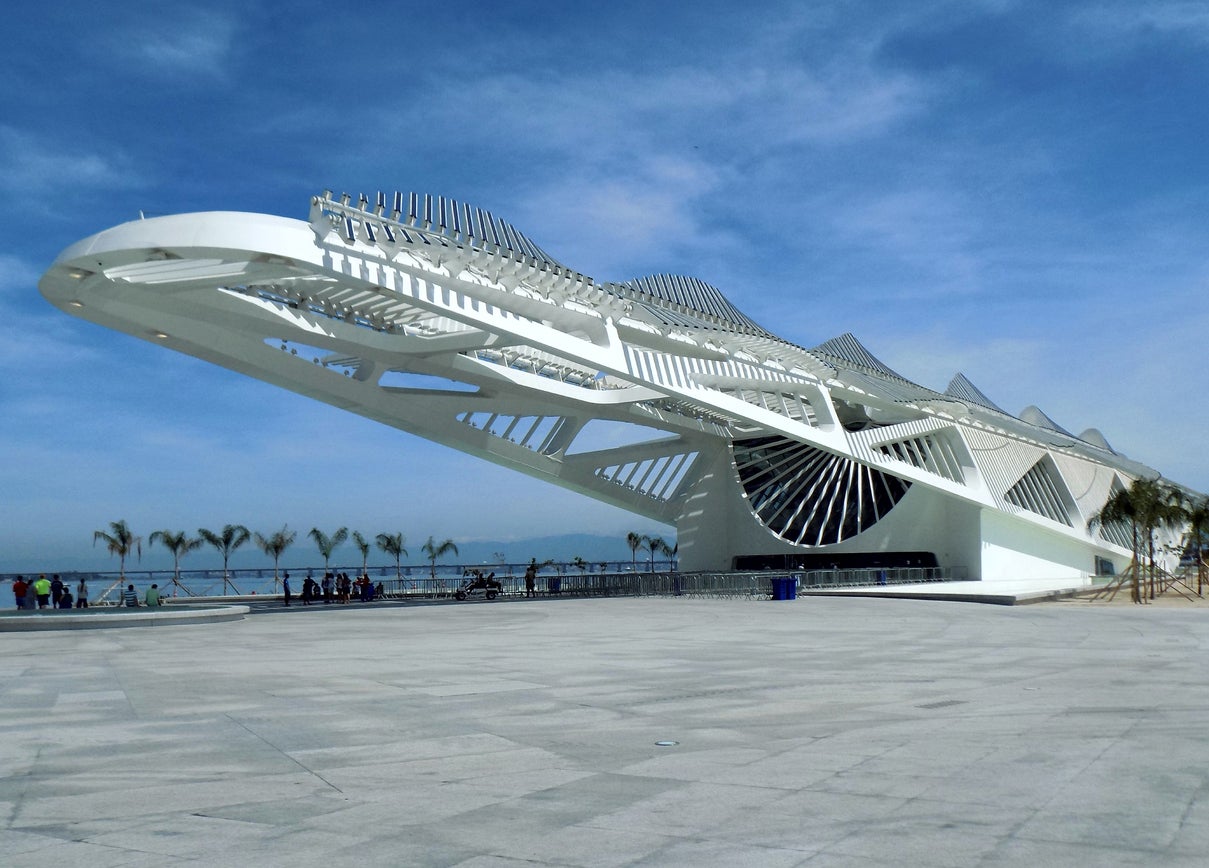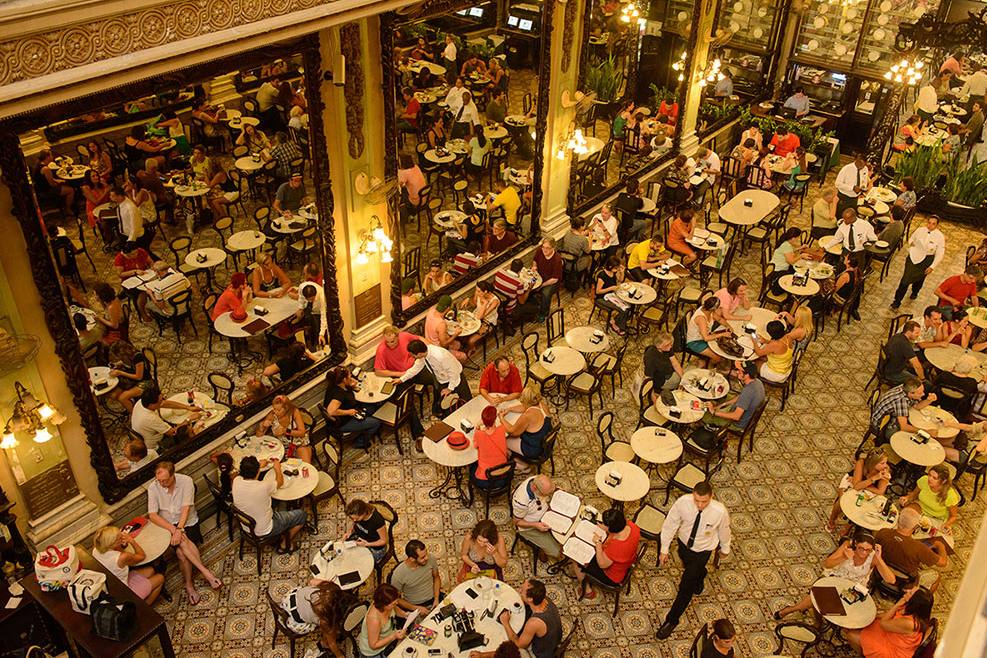The Independent's journalism is supported by our readers. When you purchase through links on our site, we may earn commission.
Rio de Janeiro city guide: Where to eat, drink, shop and stay in Brazil’s hottest city
It’s a beautiful city best known for its lively carnival but James Litston discovers how much more there is to enjoy during a Rio city break

Your support helps us to tell the story
This election is still a dead heat, according to most polls. In a fight with such wafer-thin margins, we need reporters on the ground talking to the people Trump and Harris are courting. Your support allows us to keep sending journalists to the story.
The Independent is trusted by 27 million Americans from across the entire political spectrum every month. Unlike many other quality news outlets, we choose not to lock you out of our reporting and analysis with paywalls. But quality journalism must still be paid for.
Help us keep bring these critical stories to light. Your support makes all the difference.
Its frenetic carnival – taking place in 2024 between 9-17 February – and New Year’s Eve celebrations may be legendary but Rio’s allure goes way beyond these signature events.
This is a city generously blessed by geography and climate, with miles of beachfront, forested mountains and more than its fair share of global icons: from Sugarloaf Mountain and Christ the Redeemer to the great, sandy sweep of Copacabana. This physical diversity is echoed in a diverse population of indigenous, European, Asian and African descent. The result is a city with year-round appeal and a Carioca culture that’s all its own.
If you’re looking for a samba-fuelled break in one of the world’s most exciting cities, here is your ultimate guide, including what to do, where to eat and drink, and the best places to stay.
What to do
Bird’s-eye view
Get the lay of the land by taking the cable car up Sugarloaf Mountain. The view from up here takes in Copacabana, Centro and Botafogo’s yacht-filled bay, all under the benevolent gaze of Christ the Redeemer looking down from Corcovado. Soak up the scene from the viewpoints, then follow the footpath along its flank for a break from the crowds.
Hit the beach
Rio’s biggest trump card is its miles of golden sand. The beaches are as much a place for socialising as sunbathing, drawing Cariocas to play ballgames in the tiniest of swimsuits. Choose from family-friendly Copacabana, Arpoador’s lively surfer scene or the tall and tanned on Ipanema. Forgotten something? No worries: an army of traders patrols all day, selling everything from snacks and swimwear to ice-cold beer and panama hats.

Museums and monuments
Head into historic Centro to discover its energy and architecture. Opulent public buildings and faded, pastel-painted shopfronts stand alongside modernist masterpieces and towering Seventies eyesores. Wander cobbled streets and chaotic markets, then pop into any colonial church to eyeball its interiors. Don’t miss the wonder-filled Art Museum or Santiago Calatrava’s futuristic, waterfront Museum of Tomorrow and its digital exhibits on climate change and sustainability.

Gardeners’ world
Experience Rio’s leafy backdrop with a visit to the Botanical Gardens. Being on the edge of the Tijuca rainforest, it’s filled with wildlife. Look out for marmosets, monkeys, sloths and toucans while strolling down avenues of palms.
Get high
There’s no better way to see the sights than from a helicopter. Vertical Rio offers half-hour sightseeing flights made even more memorable by the fact that its helicopters have no doors. Cruise along the coast and high above Christ the Redeemer for an epic “shoe selfie” (yes, it’s a thing) that will be the envy of Instagram.

Where to stay

Music and passion were always the fashion at the Belmond Copacabana Palace. Opened in 1923 on Copacabana Beach, this century-old, 239-room landmark remains Rio’s most elegant address. A recent refurbishment has given all 239 rooms a contemporary update, though its glamorous history is called to mind in the “hall of fame” of former guests (which includes portraits of everyone from Ginger Rogers to Princess Di).
Down the coast in upmarket Leblon, you’ll find the super-stylish Janeiro Hotel. All of its 51 rooms have at least partial sea views and are big, bright and beautifully decorated with an aesthetic that pairs Scandinavian simplicity with a distinctively tropical slant. Clean lines, pale wood, travertine, linen and palm-tree artworks make it feel supremely stylish, plus there’s a rooftop bar and lap pool exclusively for guests.
Perfectly positioned at the other end of Ipanema is Hotel Arpoador, whose aspect takes in the strand’s full, sandy length. Its 49 compact rooms have tastefully subtle nautical touches and are dressed in a simple palette of white and ocean blue. It’s almost unique in Rio by opening right onto the patterned promenade and offers bicycles to borrow and complimentary rooftop yoga.
Where to eat
It’s worth heading into Centro purely to pig out at Confeitaria Colombo, a patisserie that’s been in business since 1894. Its grand, Art Nouveau interiors, tiled floors and stained glass ceiling create a classy setting in which to indulge in pastries, cakes and custard tarts (or sandwiches and croquettes). There’s also a branch in Copacabana if you don’t fancy leaving the coast.

Eating out in Rio isn’t cheap but Filé do Lira bucks the trend with its traditional platters big enough for two. Go for something like Brazilian beef stew served with rice, beans, fried eggs and plantain, all washed down with a couple of caipirinhas.
The cheapest and most varied way to eat out is in a por quilo restaurant, where buffets of sushi, salads and heartier dishes are sold by weight. They’re commonplace all over the city but Copacabana’s Restaurante Aipo e Aipim is particularly popular.
At the other end of the spectrum is MEE, a high-end, pan-Asian restaurant within the Copacabana Palace. A recipient of one of South America’s first Michelin stars, dining here is a treat: expect dim sum, pork belly buns, pad Thai and exceptional cocktails.
Where to drink
For the best panorama of Copacabana all the way to Sugarloaf Mountain, head to Café 18 do Forte at the historic Copacabana Fort. Sip a craft beer or caipirinha and be sure to peek over the wall to spot sea turtles swimming below.

Soak up more water views at Bar Urca, an informal joint whose scenic setting makes it popular for evening drinks. Join crowds of locals along the sea wall and take in the view towards Christ the Redeemer as the sun sets over Guanabara Bay.
For more in the way of late-night revelry, try Canastra. Located on an Ipanema backstreet, this unpretentious bijou bar is a hit with locals and visitors alike. Squeeze into the crowded ground-floor space or the basement speakeasy, or follow the fun outside onto the street.
Where to shop
Imported goods are heavily taxed in Brazil, so aim for local buys. Havaianas flip-flops are the obvious choice (there’s a flagship store in Ipanema). Find a wider choice of Brazilian brands among more familiar international stores at Shopping Leblon, plus more around the corner at Rio Design Leblon, a smaller-scale mall that’s big on Carioca products, such as Granado Pharmacias’s soaps and colognes. Also look out for local fashion brands Lenny Niemeyer, Handred, Haight and Osklen, plus swimwear from Adriana Degreas.

Far more affordable is the Sunday Feira Hippie (Hippie Market) in Ipanema’s General Osório Square. Scores of artisans set up stalls in the shade of sprawling trees to sell handmade ceramics, original artworks, jewellery, souvenirs and quality handicraft items made cleverly from bamboo, leather, wicker, wood and brightly coloured fabrics.
Architectural highlight
Unlike the many classical churches that dot historic Centro, the Metropolitan Cathedral has a Brutalist design that seems at once part Mayan pyramid, part Dalek.

Nuts and bolts
What currency do I need?
Brazilian real.
What language do they speak?
Portuguese.
Should I tip?
A 10 per cent service charge is generally included.
What’s the time difference?
GMT-3.
Average flight time?
Around 12 hours from London.
Public transport
The metro offers a fast, air-conditioned and cheap connection between city and beach.
Best view
Corcovado (the peak topped by Christ the Redeemer) is the highest point in Rio. Anything not visible from up here is basically not worth seeing.
Insider tip
Arpoador – the rocky headland between Copacabana and Ipanema – is the very best spot for watching the sun set behind the twin peaks of Dos Irmãos.
Join our commenting forum
Join thought-provoking conversations, follow other Independent readers and see their replies
Comments